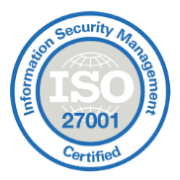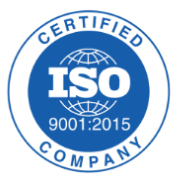It is a guide on how to choose the right Learning Management System (LMS) for your customer or partner training program. A formal training program can create profitable and long-lasting relationships with your customers and partners, but it takes work and strategic planning. Selecting a suitable LMS is crucial for the success of your training program.
Our buyer’s guide covers what to look for, what to consider, and how to make a successful purchase. By the end, you’ll know what features to look out for, how to choose an appropriate LMS, and how to make your program successful. Let’s dive in!
Learn how to select the best LMS for your organization, for free trial!
What is the role of an LMS?
An LMS or Learning Management System is a comprehensive tool that facilitates the administration, management, and delivery of organizational training programs. Its functionalities enable organizations to:
- Deliver training in a versatile and on-demand manner
- Regulate and organize training content
- Monitor and check apprentice progress
- Enhance retention rates
- Easily upgrade training content
What Problems Does LMS Solve?
Businesses often view partner training as a supplementary aspect of the sales process. However, a more intentional and structured approach can yield significant advantages for your network. By implementing a well-organized and carefully designed training program utilizing a Learning Management System (LMS), you can effectively address various challenges that you may currently be facing, such as:
- Lack of potential between consumers and partners
- Stagnant sales progress
- Consumers and partners with inadequate product knowledge
- Erratic objectives
- Dissatisfying performance of customers and partners
- Absence of partner classification
- Inadequate interaction between your sales team and partners.
How will the right LMS solve the above problems?
1. Provide customized training
Enhance partner performance and boost product or service knowledge. Provide a tailored and captivating learning experience for each audience. Efficiently and promptly distribute new updates and information. Facilitate swift mobilization by providing comprehensive onboarding training to new partners.2. Analyze outcomes
Keep records of your progress and monitor it regularly to identify areas where knowledge gaps exist. Utilize badging and certification programs to encourage and inspire members of your network.3. Reinforce your brand
Ensure brand messages are consistently communicated to enhance market share and foster durable partnerships. Attain a competitive edge and boost customer lifetime value while also improving cost-effectiveness. Provide training to your network regardless of their location, eliminating the need for expensive travel. Develop a training program that generates revenue.Select an LMS according to organizational use cases.
Common Use Cases of Learning Management Systems
Learning Management Systems (LMS) have become increasingly popular in recent years due to their ability to manage and deliver educational content effectively. Here are some common use cases of Learning Management Systems:Employee training and development:
LMSs are commonly used to deliver training and development programs to employees. This can include onboarding, compliance training, leadership development, and skills training.Academic education:
LMSs are also used in academic institutions to deliver online courses, blended learning, and distance education. This can include K-12 education, higher education, and professional development programs.Continuing education and certifications:
LMSs are used to deliver continuing education programs and certifications in a variety of industries, including healthcare, finance, and technology. This can help professionals maintain their licenses, stay up-to-date on industry developments, and advance their careers.Customer and partner training:
LMSs are used to provide training and certification programs to customers and partners. This can include product training, technical training, and sales training.Non-profit and community education:
LMSs are used by non-profit organizations and community groups to provide online courses and educational resources to their members. This can include adult education programs, language classes, and vocational training.Try Paradiso Free for 30 days
Paradiso CourseCart is everything your online business needs.
All in one place
The 3 Types of Learning Management Systems (LMS) to Consider
To create a good training program, you need to think about how you will manage it well and choose the right platform to use.
1. Open Source LMS
When considering a platform for your training program, it’s essential to evaluate the level of flexibility and customization you require. Open-source LMS is designed to provide organizations with complete freedom to share, modify, and update the platform according to their specific needs. Prices are generally based on the number of users per month, or licenses are not needed, depending on the level of support available.
2. Cloud-based (SAAS) LMS
A cloud-based learning management system provides an end-to-end solution for online training. These platforms are easy to use and fully customizable, making them ideal for corporations and educational facilities looking to train employees and students. Paradiso AI-powered LMS is one such system that offers over 50 out-of-the-box integrations with enterprise applications such as Salesforce, PeopleSoft, Google Apps, and WebEx, all at an affordable price point.
3. On-premises (Installed) LMS
An on-premises LMS is typically straightforward and incurs a one-time perpetual license fee. These systems are often more customizable than cloud-based solutions and provide greater control over the implementation process and LMS data. With an on-premises LMS, you have complete control over data security. Choose the best self-hosted learning management system and start your training program.
13 Must-Have Features of a Learning Management System
Before considering the various features available, it’s essential to determine if the LMS was specifically designed for external training. Once you have established this, you can then focus on identifying some of the key features that may be relevant. Which are-
- User-friendly interface: A user-friendly interface is essential for an LMS to be effective. It should be easy to navigate and understand, even for users who are not tech-savvy.
- Course management: The LMS should allow administrators to create, manage, and deliver courses online. It should support various content types such as videos, PDFs, and quizzes.
- In-built Content authoring tools: The LMS should provide tools to create and upload content easily, such as drag-and-drop interfaces, video recording capabilities, and content templates.
- Personalization: The LMS should allow learners to personalize their learning experience, including selecting courses and setting learning goals.
- Assessment and feedback: The LMS should include assessment tools to evaluate learners’ progress and provide feedback. It should offer various question types and grading options, as well as customizable feedback.
- Gamification: The LMS should include gamification elements, such as badges and leaderboards, to motivate learners and increase engagement.
- Mobile compatibility: The LMS should be compatible with mobile devices and offer a seamless learning experience across different devices.
- Analytics and reporting: The LMS should offer robust analytics and reporting features to help administrators track learner progress and identify areas for improvement.
- Integration with other systems: The LMS should integrate with other systems, such as HR systems and CRM systems, to streamline processes and data sharing.
- Social learning: The LMS should allow learners to interact with each other, collaborate, and share knowledge through social learning tools.
- Compliance and certification management: The LMS should support compliance training and certification management, including tracking certification expiration dates and reminding learners to renew their certifications.
- Multi-language support: The LMS should support multiple languages to accommodate learners from diverse backgrounds and locations.
- Security: The LMS should have robust security features, including data encryption, access controls, and regular security audits, to protect learners’ data and prevent unauthorized access.
What is an LXP (Learning Experience Platform)?
What is the Difference Between an LMS and an LXP?
While both Learning Management Systems (LMS) and Learning Experience Platforms (LXP) are used for delivering and managing online learning, there are key differences between the two.
LMS platforms are designed to manage and deliver structured, formal learning programs such as compliance training, onboarding, and certifications. They provide tools for creating, organizing, and tracking courses, assignments, and assessments. LMSs are typically used in corporate settings, educational institutions, and organizations where compliance and regulatory training are essential. They tend to be focused on the administration of learning and less on the learner’s experience.
LXPs, on the other hand, are designed to facilitate informal, self-directed learning experiences that are driven by the learner’s interests, skills, and career goals. They prioritize the learner experience, with features such as personalization, recommendations, social learning, and microlearning. LXPs are often used by companies seeking to create a culture of continuous learning, where employees can access relevant content anytime, anywhere.
How Much Does an LMS Cost?
LMS Pricing Models You Should Know About
1. PAY PER USER
In this method, you can acquire the LMs paying for a specific number of users. This form of payment is useful for companies that have certainty about the exact number of users to whom the eLearning content will be taught. This pricing plan works if the training in your company is mandatory2. PAY PER ACTIVE USER
The users who take your courses may vary with the passing of the weeks and this influences the price of the LMS software. Contrary to the previous price model, the payment by active users offers the possibility of locating in a variable range of users and agreeing on a price according to the quantities. You will only be charged for the users that log into the system during the pay period.3. LICENSING
Under this model, users are typically charged an annual fee that is reviewed annually or an upfront fee for the entire contract duration. With this option, software upgrades may be necessary to keep up with technological advancements.4. Open source LMSs
A free Open-source LMS (learning management system), is one of the essential tools for LMS experts to increase engagement and enhance the learning experience. When searching for an LMS to meet their goals for learning development, businesses are aware of how open-source training monitoring software might help.Learn how to create and publish your first course with Paradiso CourseCart, for free!
How To Choose An LMS In 4 Steps!
Choosing the right Learning Management System (LMS) can be a daunting task with so many options available in the market. To help you make an informed decision, here are 4 steps to consider when selecting an LMS:
1. Identify your organization’s needs and goals:
Before selecting an LMS, it’s crucial to identify your organization’s specific needs and goals. Ask yourself what you want to achieve with the LMS, who the target audience is, and what features you require. Consider factors such as the size of your organization, the number of learners, and the type of training content you will be delivering.
2. Evaluate LMS features and functionalities:
Once you have identified your organization’s needs, evaluate the features and functionalities of different LMS platforms. Look for features such as ease of use, scalability, customization options, tracking and reporting capabilities, mobile accessibility, and integration with other software. Also, consider the support and maintenance offered by the vendor.
3. Check for compatibility with your existing systems:
It’s important to ensure that the LMS is compatible with your existing systems such as your HRIS, ERP, or CRM. Check for technical requirements, integration options, and API availability to avoid any compatibility issues.
4. Compare pricing and licensing options:
Lastly, compare pricing and licensing options for different LMS vendors. Some vendors offer a pay-per-user or subscription-based model, while others may charge based on features or customization requirements. Consider the total cost of ownership, including implementation and maintenance costs, to choose the most cost-effective option.
Successful implementation of an LMS can bring numerous advantages, such as faster product adoption, lower support costs, enhanced customer satisfaction, and a competitive edge. These benefits can lead to an increase in sales and market share. Additionally, your partners and customers will recognize the value of collaborating with an organization that shares their goals and prioritizes their success.
6 Ways to Increase Employee Engagement With Your LMS
1. Provide engaging and relevant content:
The quality of the content is essential for the success of an LMS. Ensure that the content is engaging, interactive, and relevant to the learners’ needs. It should be tailored to different learning styles and levels of experience to cater to all learners.2. Personalize learning paths:
Personalization is key to effective learning. Use the LMS to provide personalized learning paths to each learner based on their interests, strengths, and weaknesses. This can help learners stay motivated and engaged throughout the learning process.3. Encourage social learning:
Social learning is an effective way to promote collaboration, knowledge sharing, and peer-to-peer learning. Encourage learners to participate in online discussions, forums, and collaborative activities to foster a culture of learning and support.4. Gamify the learning experience:
Gamification can make learning more engaging and fun. Incorporate game-like elements such as points, badges, and leaderboards into the LMS to motivate learners and reward their achievements.5. Use data to track progress and measure success:
Use the tracking and reporting features of the LMS to monitor learners’ progress and measure the success of the training program. This can help identify areas for improvement and adjust the content and delivery methods accordingly.6. Provide ongoing support and training:
Ensure that learners have access to ongoing support and training resources to help them succeed in their learning journey. This can include online help resources, FAQs, and access to subject matter experts.Summary
Dynamic training is crucial for business growth and success. Our solutions offer a comprehensive range of learning resources and an innovative Learning Management System, which allows you to run a successful training program without any internal resources. Furthermore, as your partner in training, we deliver partner training programs cost-efficiently, leaving you to focus on your core business while we take care of your training.


















